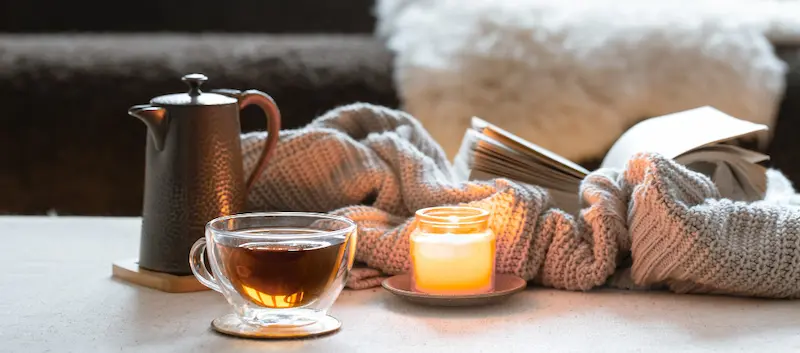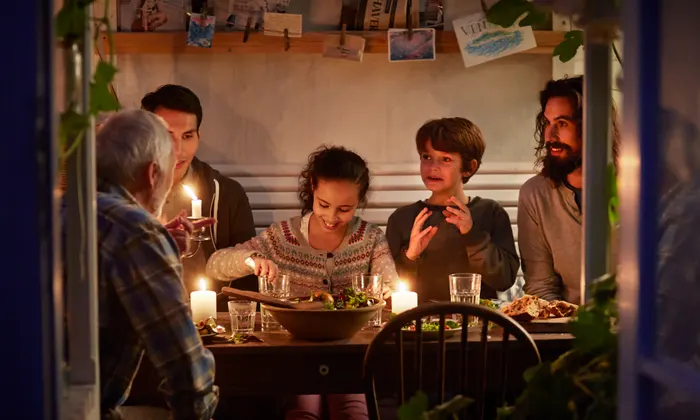
The concept of hygge has its roots in Denmark, where it’s been an important part of the culture for centuries. The word itself comes from the Norwegian word “hygge,” which means “well-being.” Hygge first appeared in Danish writing in the early 1800s, and it’s been a part of the national psyche ever since.
Denmark is known for its long, dark winters, and hygge was originally a way to make the most of this challenging season. People would light candles, gather around a fire, and enjoy hot drinks and hearty meals with friends and family. Hygge was a way to create a cozy and welcoming atmosphere in the home, and it became an important part of Danish culture.
The Meaning of Hygge

Hygge is more than just a feeling of coziness. It’s a way of life that’s focused on creating a sense of well-being and contentment. Hygge is about taking pleasure in the simple things in life, such as spending time with loved ones, reading a good book, or enjoying a cup of tea.
Hygge is also about creating a warm and welcoming atmosphere in the home. This might mean lighting candles, using soft lighting, or adding cozy textiles like blankets and cushions. Hygge is all about creating a sense of comfort and relaxation, and it’s a way to combat the stresses of modern life.
Examples of Hygge in Practice
There are many ways to incorporate hygiene into your daily life. Here are a few examples:
- Create a cozy reading nook: Set up a comfortable chair, add some soft lighting, and surround yourself with your favorite books.
- Host a dinner party: Invite friends over for a home-cooked meal and enjoy good food, good conversation, and good company.
- Take a walk in nature: Spending time in nature is a great way to connect with the world around you and find a sense of peace and tranquility.
- Practice self-care: Take a relaxing bath, light some candles, or indulge in your favorite hobby.
Hygge vs. Minimalism: Understanding the Difference

Hygge and minimalism are two lifestyle trends that have gained popularity in recent years. While they might seem similar at first glance, they have some important differences.
Minimalism is all about simplifying your life and getting rid of excess. It’s about living with less and focusing on what’s truly important. Hygge, on the other hand, is about creating a cozy and welcoming atmosphere in the home. It’s about surrounding yourself with things that bring you joy and comfort.
While minimalism might mean getting rid of things, hygge is about cherishing the things you have. It’s about creating a space that’s warm and welcoming, and that makes you feel happy and content.
How to Incorporate Hygge into Your Daily Life
Incorporating hygge into your daily life is easy and doesn’t require a lot of effort. Here are some simple ways to get started:
- Light some candles: Candles are an important part of hygge. They create a warm and welcoming atmosphere and add a sense of coziness to any space.
- Add some cozy textiles: Soft blankets, fluffy cushions, and warm rugs are all great ways to add a sense of comfort to your home.
- Enjoy a hot drink: Whether it’s a cup of tea, coffee, or hot chocolate, a warm drink is a great way to feel cozy and content.
- Spend time with loved ones: Hygge is all about connecting with others. Spend time with friends and family, and enjoy good food, good conversation, and good company.
The Benefits of Hygge
There are many benefits to incorporating hygge into your daily life. Here are just a few:
- Reduced stress: Hygge is all about creating a sense of comfort and relaxation, which can help to reduce stress and anxiety.
- Improved well-being: By focusing on the simple things in life, such as spending time with loved ones and enjoying a good book, hygge can help to improve overall well-being.
- Enhanced relationships: Hygge is all about connecting with others, which can help to strengthen relationships and improve social connections.
Hygge in Different Cultures

While hygge originated in Denmark, the concept of creating a warm and welcoming atmosphere is something that’s important in many cultures around the world. In Japan, for example, there’s a similar concept called “wabi-sabi,” which is all about finding beauty in imperfection. In Sweden, there’s a concept called “lagom,” which is about living a balanced and harmonious life.
Hygge-Inspired Products
Hygge has become so popular in recent years that there are now many products available that are designed to help you create a cozy and welcoming atmosphere in your home. Here are a few examples:
- Cozy blankets and cushions
- Soft lightings, such as string lights or fairy lights
- Aromatherapy candles or diffusers
- Warm and inviting scents, such as cinnamon or vanilla
Embracing the Cozy Charm of Hygge

Hygge is a concept that’s all about creating a sense of well-being and comfort in everyday life. It’s about cherishing the simple things in life and finding joy in the present moment. By incorporating hygge into your daily life, you can create a warm and welcoming atmosphere in your home, reduce stress and anxiety, and improve overall well-being. So why not embrace the cozy charm of hygge today?
Start incorporating hygge into your daily life and experience the benefits of a cozy and welcoming atmosphere.





